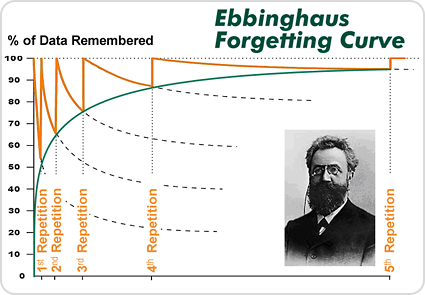The ICT technology that has been chosen in this post is based on a Japanese language course that has created in the web 2.0 website memrise. Being web 2.0 it allows users to contribute and dynamically interact with the sites content similarly to way a wiki works.
The course created can be found here:
http://www.memrise.com/course/429032/most-common-japanese-adverbs/
Again following the language learning theme memrise is a web 2.0 service that allows anyone to create spaced repetition courses mainly for language learning but the technology can be applied to anything that needs information recalled. Spaced repetition is technology based on Ebbinghaus forgetting curve which states that our brains gradually forget data over time. To increase the chances of retaining this information our brains need to be tested on recalling the data using spaced time intervals.
Source:
https://p2pu.org/he/groups/studying-psychololgy-the-p2pu-way/content/task-21-the-ebbinghaus-forgetting-curve/The beauty of the service is that the site gives you all the scaffolding tools to keep students engaged via the use of 'mems' which are visual mnemonic ques that help students retain the information buy attaching the information to something they already know.
Example of a mem that has been created.
Using the SAMR model this site could be used in the classroom via:
Substitution: The system uses a digital flash card system that can substitute for real life flash cards.
Augmentation: The flash cards have functional improvement because the system integrates the use of spaced repetition.
Modification: The system allows for students to add their own mems and courses. For example a classroom exercise could be for each student to make their own memrise course and then swap their course with another student. This in turns builds the social constructivism aspects of the learning experience.
Redefinition: The system allows students to add additional words and mems to their courses.


No comments:
Post a Comment